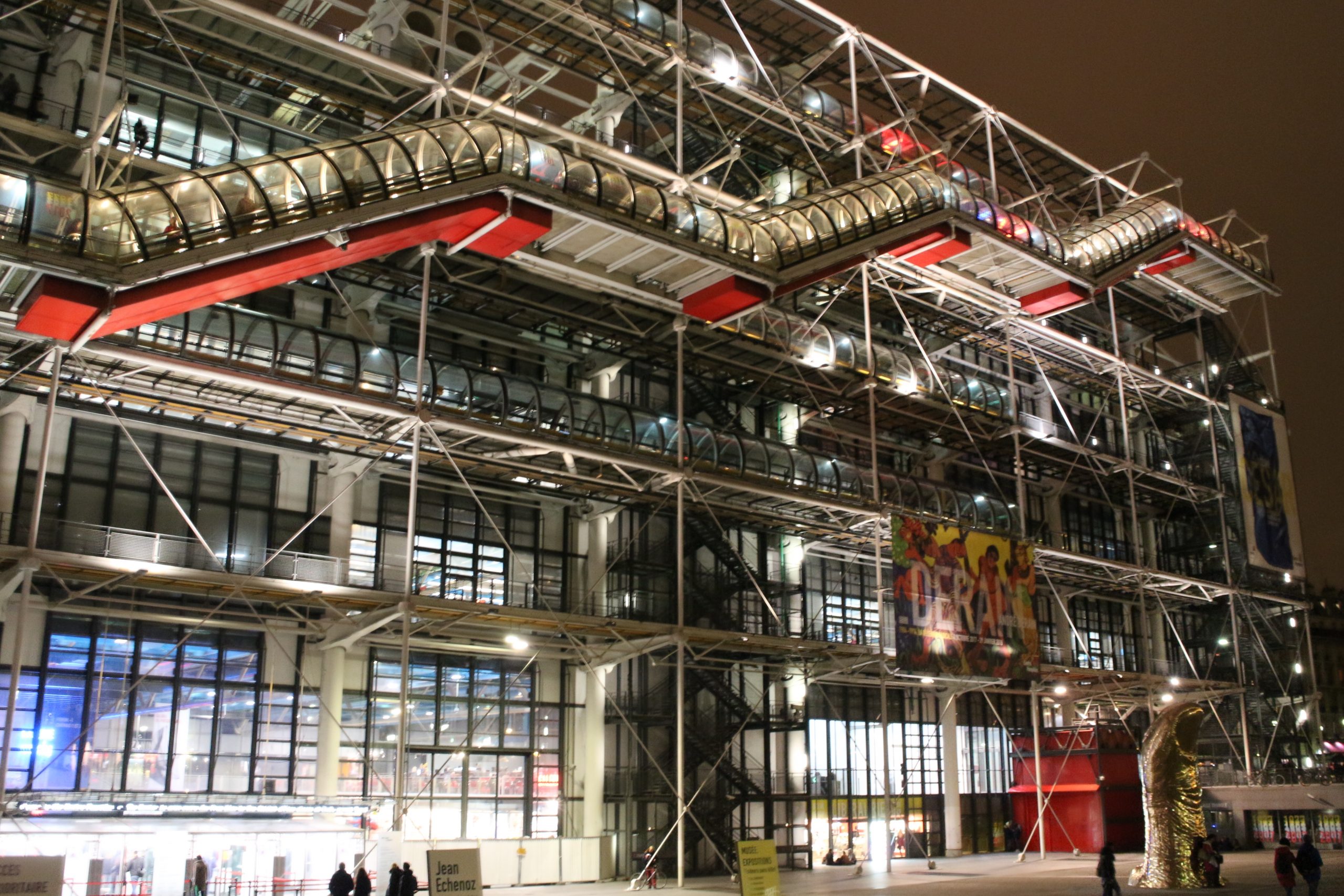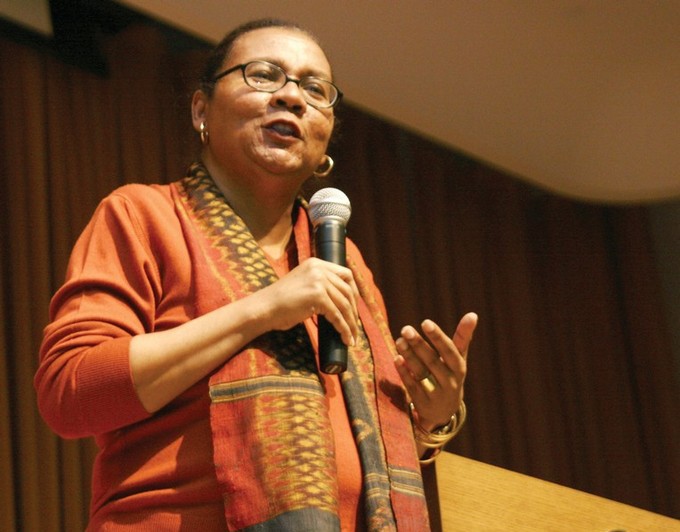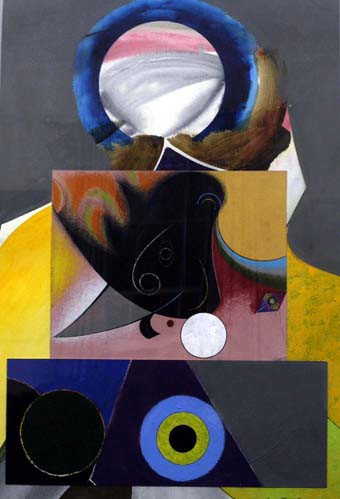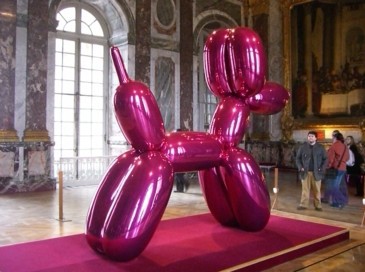8.0 What is the Post-Modern?
Postmodernism https://boisestate.pressbooks.pub/arthistory/chapter/modern-to-postmodern/ – edited by Jennifer Lorraine Fraser

Post-Modern Architecture
The ideas of Postmodernism in visual culture are based on the philosophies of French philosophers, specifically Jacques Derrida’s theories on deconstruction being at the forefront of postmodernist thought, and arguably first appeared relevant in architectural design of the 1980s. Buildings like the Beaubourg Center or more commonly known as the Centre Pompidou in Paris, was designed and completed by Renzo Piano, Richard Rogers, and Gianfranco Franchini in 1977. Its inside-out structure with most of the internal mechanical and functional systems exposed on the exterior seemed to coincide with the deconstructionist ideas of Derrida. It houses much of France’s contemporary art.
Race and Ethnicity in Postmodernism
Postmodernism had a profound influence on the concepts of race and ethnicity in the United States in the mid-20th century.
Key Points
- Postmodernism relies on concrete experience over abstract principles, arguing that the outcome of one’s own experience will necessarily be fallible and relative rather than certain or universal.
- A great deal of art during this era sought to deconstruct race through a postmodern lens, arguing that race is not based in any biological reality but is instead a socially constructed category.
- Primarily through a postmodern perspective, the author bell hooks has addressed the intersection of race, class, and gender in education, art, history, sexuality, mass media, and feminism.
- The Civil Rights movement of the 1960s and 1970s led artists to express the ideals of the times. Galleries and community art centers were developed for the purpose of displaying African-American art, and collegiate teaching positions were created by and for African- American artists.
- By the 1980s and 1990s, hip-hop graffiti became predominate in urban communities. Most major cities developed museums devoted to African American artists. The National Endowment for the Arts provided increasing support for these artists.
- Post-black art is a phrase that refers to a category of contemporary African-American art. It is a paradoxical genre in which race and racism are intertwined in a way that rejects their interaction.
Key Terms
- bell hooks: Born Gloria Jean Watkins (1952 – 2021); an American author, feminist, and social activist; known for her focus on the interconnectivity of race, capitalism, and gender and their ability to perpetuate systems of oppression.
- deconstruction: A philosophical theory of textual criticism; a form of critical analysis.
- post-structuralism: A doctrine that rejects structuralism’s claims to objectivity and emphasizes the plurality of meaning.
Background
Postmodernism (also known as post-structuralism) is skeptical of explanations claiming to be valid for all groups, cultures, traditions, or races, and instead focuses on the relative truths of each person (i.e. Postmodernism = relativism). In the postmodern understanding, interpretation is everything; reality only exists through our interpretations of what the world means to us individually. Postmodernism relies on concrete experience over abstract principles, arguing that the outcome of one’s own experience will necessarily be fallible and relative rather than certain or universal.
Postmodernism frequently serves as an ambiguous, overarching term for skeptical interpretations of culture, literature, art, philosophy, economics, architecture, fiction, and literary criticism. It is often associated with deconstruction and post-structuralism because its usage gained significant popularity at the same time as 20th-century post-structural thought.
Postmodernism postulates that many, if not all, apparent realities are social constructs and are therefore subject to change. It claims there is no absolute truth and people perceive the world subjectively. Emphasizing the role of language, power relations, and motivations in the formation of ideas and beliefs, postmodernist arguments attack the use of binary classifications such as male versus female, straight versus gay, white versus black, and imperial versus colonial; it holds realities to be plural, relative, and dependent on who the interested parties are and the nature of these interests. Postmodernist approaches consider the ways in which social dynamics, such as power and hierarchy, affect human conceptualizations of the world and the important effects on the way knowledge is constructed and used. Postmodernist thought often emphasizes constructivism, idealism, pluralism, relativism, and skepticism in its approaches to gaining knowledge and understanding.
Postmodernism and Race
Postmodernism had a profound influence on the concepts of race and ethnicity, and in the mid to late 20th century, scholars began to reconceptualize the term “race” as a social construct – meaning that it has no inherent biological reality, but is a classification system that has been constructed or invented for societal purposes. Following the Second World War, evolutionary and social scientists were acutely aware of how beliefs about race were used to justify discrimination, apartheid, slavery, and genocide. This questioning gained momentum in the 1960s during the U.S. civil rights movement and the emergence of numerous anti-colonial movements worldwide.
A great deal of art during this era sought to deconstruct race through a postmodern lens. The author bell hooks is widely known for her writing focused on the connection of race, capitalism, and gender and what she describes as their ability to produce and perpetuate systems of oppression and class domination. She has published more than 30 books and numerous scholarly and mainstream articles, appeared in several documentary films, and participated in various public lectures. Primarily through a postmodern perspective, hooks has addressed race, class, and gender in education, art, history, sexuality, mass media, and feminism.

Some African-American artists began taking a global approach to their art practice after World War II. Artists such as Barbara Chase-Riboud, Edward Clark, Harvey Cropper, and Beauford Delaney worked and exhibited abroad in Paris, Copenhagen, and Stockholm. Other African-American artists made it into important New York galleries by the 1950s and 1960s: Horace Pippin and Romare Bearden were among the few who were successfully received in a gallery setting. The Civil Rights Movement of the 1960s and 1970s led artists to capture and express the times and changes. Galleries and community art centers were developed for the purpose of displaying African- American art, and collegiate teaching positions were created by and for African-American artists.

Post-black art arose during this time as a category of contemporary African-American art. It is a paradoxical genre of art where race and racism are intertwined in a way that rejects their interaction. By the 1980s and 1990s, hip-hop graffiti became predominate in urban communities. Most major cities had developed museums devoted to African American artists. The National Endowment for the Arts provided increasing support for these artists.
Postmodernist Sculpture
The characteristics of Postmodernism, such as collage, pastiche, appropriation, and the destruction of barriers between fine art and popular culture, can be applied to sculptural works.
Key Points
- While inherently difficult to define by nature, Postmodernism began with pop art and continued within many following movements including conceptual art, neo- expressionism, feminist art, and the young British artists of the 1990s.
- Intermedia, installation art, conceptual art, video, light art, and sound art are often regarded as postmodern mediums.
- In the 1960s and 1970s artists like Eduardo Paolozzi, Chryssa, Claes Oldenburg, George Segal, Edward Kienholz, Nam June Paik, Wolf Vostell, Duane Hanson, and John DeAndrea explored abstraction, imagery, and figure by using video art, environment, light sculpture, and installation art in new ways.
- Jeff Koons is a good example of a postmodern sculptor; his works elevate the mundane, contain a heavy dose of kitsch, and project an element of ambiguous cynicism often seen in postmodern works.
Key Terms
- postminimalist: One who works in the style of postminimalism.
- kinetic: Of or relating to motion.

The characteristics of Postmodernism, include bricolage, collage, appropriation, and the recycling of past styles and themes in a modern-day context. The destruction of the binaries between fine arts, and craft associated with popular culture, can be applied to sculpture. While inherently difficult to define by nature, some scholars claim Postmodernism began with pop art and continued within many following movements including conceptual art, neo-expressionism, feminist art, and the young British artists, along with Tracy Emin, of the 1990s. The plurality of idea and form that defines Postmodernism essentially allows any medium to be considered postmodern. In terms of sculpture, characteristics like mixed media, installation art, conceptual art, video light art, and sound art are often regarded as postmodern.
Jeff Koons
Jeffrey “Jeff” Koons (born January 21, 1955) is an American artist known for working with popular culture subjects and reproducing banal objects, such as balloon animals produced in stainless steel with mirror-finish surfaces. His works have sold for substantial sums, including at least one world record auction price for a work by a living artist.
Koons gained recognition in the 1980s and subsequently set up a factory-like studio in a SoHo loft on the corner of Houston Street and Broadway in New York. It was staffed with over 30 assistants, each assigned to a different aspect of producing his work, in a similar mode as Andy Warhol’s Factory (notable because all of his work is produced using a method known as art fabrication). Today, he has a 16,000-square-foot factory near the old Hudson rail yards in Chelsea, working with 90 to 120 regular assistants. Koons developed a color-by-numbers system so that each of his assistants could execute his canvases and sculptures as if they had been done “by a single hand”. Koons is a good example of a postmodern sculptor because his works elevate the mundane, contain a heavy dose of kitsch, and project an element of ambiguous cynicism often seen in Postmodern works.


